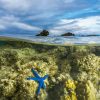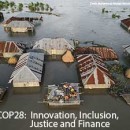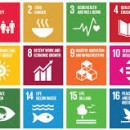Languages
Saturday, July 27, 2024
News and Views from the Global South
COP15

Global Biodiversity Framework: A ‘Good Compromise’
In a landmark agreement, all parties of the United Nations Convention on Biological Diversity (UNCBD) adopted the draft Global Biodiversity Framework (GBF) to protect at least 30% of the world’s lands and water by 2030.
Biodiversity Agreement Historic But Difficult to Implement
The pillar coral (Dendrogyra cylindrus), which takes its name from its shape, is found throughout the Caribbean Sea, but its population has declined by more than 80 percent since 1990. As a result, the International Union for Conservation of Nature (IUCN) has listed it as "critically endangered" due to the effects of the human-induced climate crisis.
Gender Target at COP15: Russia’s Single Word Objection Holds Up Process
Since the beginning of the high-level segment, tensions have been steadily rising at the 15th meeting of the conference of the parties to the UN Convention on Biological Diversity (CBD COP15) among all participants, including members of country delegation teams, NGOs, observers, monitors, and media. At the press events held daily at the media center and various other events in the Montreal Convention Center, an outburst of anger and frustration have become a common sight.
Tracking the Impact of Science on Biodiversity Conservation
Billy Offland (21), a British sustainability student, went on a two-year 'World Conservation Journey' to bring attention to the biodiversity crisis as the world seeks a deal to protect nature.
Digital Treatment of Genetic Resources Shakes Up COP15
In addition to its nutritional properties, quinoa, an ancestral grain from the Andes, also has cosmetic uses, as stated by the resource use and benefit-sharing permit ABSCH-IRCC-PE-261033-1 awarded in February to a private individual under a 15-month commercial use contract.
COP15: Impact of Mega Infrastructure Projects on Biodiversity Stay Off-Radar
As the COP entered its crucial second week, negotiations are intensifying now. A slew of new contact groups – meeting mostly behind closed doors – are discussing the minutest details of the Global Biodiversity Framework and the contentious issues within or around it, such as Digital Sequencing Information, Access, and Benefit Sharing. The core aim of all these groups is to talk and resolve all issues and produce a draft treaty that will be acceptable to all parties.
As COP15 Begins, Biodiversity’s ‘Paris Moment’ Looks a Distant Dream
The long-awaited 15th Convention of United Nations Biological Diversity (CBD COP15) finally started this week in Montreal, Canada. After four years of intense negotiations and delays caused by the COVID-19 pandemic, nations have gathered again for the final round of talks before adopting a new global treaty – the post-2020 Global Biodiversity Framework (GBF).
COP15: Shift in Societal Values Needed to Address Biodiversity Loss
Policymakers were encouraged to look at the economic and social aspects with the environmental elements of biodiversity losses to meet the Global Biodiversity Framework (GBF) targets.
Iconic Atlantic Bluefin Tuna in Less Troubled Waters
The Atlantic bluefin tuna is among the largest, fastest, and most beautifully colored of all the world’s fish species. They can measure more than 10 feet in length, weigh over 700 kilograms, and can live longer than 30 years. With their metallic blue coloring on top and shimmering silver-white on the bottom, the giant bony fish is a sight to behold.














